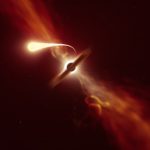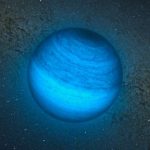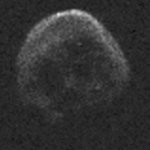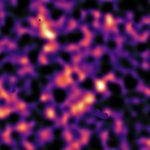Astronomers report two new space oddities0
- From Around the Web, Space
- October 15, 2020
Death by spaghettification and a stellar peacock.

Death by spaghettification and a stellar peacock.

The observations confirm that the supermassive object really is a black hole

SPHERE, a planet-hunting instrument on ESO’s Very Large Telescope, has captured the first confirmed image of a planet caught in the act of forming in the dusty disc surrounding a young star. The young planet is carving a path through the primordial disc of gas and dust around the very young star PDS 70. The data suggest that the planet’s atmosphere is cloudy.

Astronomers have spotted a carbon-rich asteroid in the icy region beyond Neptune called the Kuiper Belt — the first such asteroid ever found exiled from the inner solar system.

An international team of astronomers led by Philippe Delorme of the Grenoble Alpes University in France has recently investigated a mysterious object designated CFBDSIR J214947.2-040308.9 (CFBDSIR 2149-0403 for short) in order to reveal its true nature.

On Oct. 10, 2015, astronomers in Hawaii made a spooky discovery: a giant asteroid between 625 and 700 meters zipping through space, that at certain angles looks uncannily like a human skull.

This map of dark matter in the Universe was obtained from data from the KiDS survey, using the VLT Survey Telescope at ESO’s Paranal Observatory in Chile.



